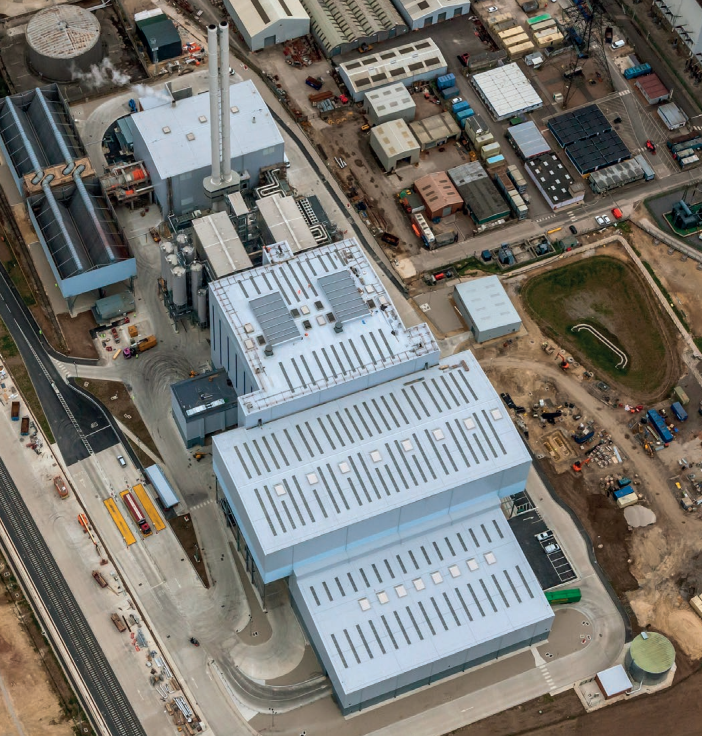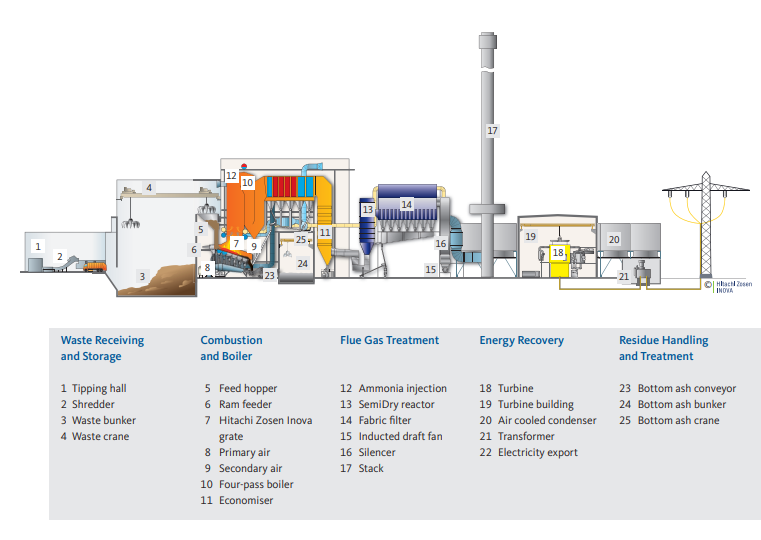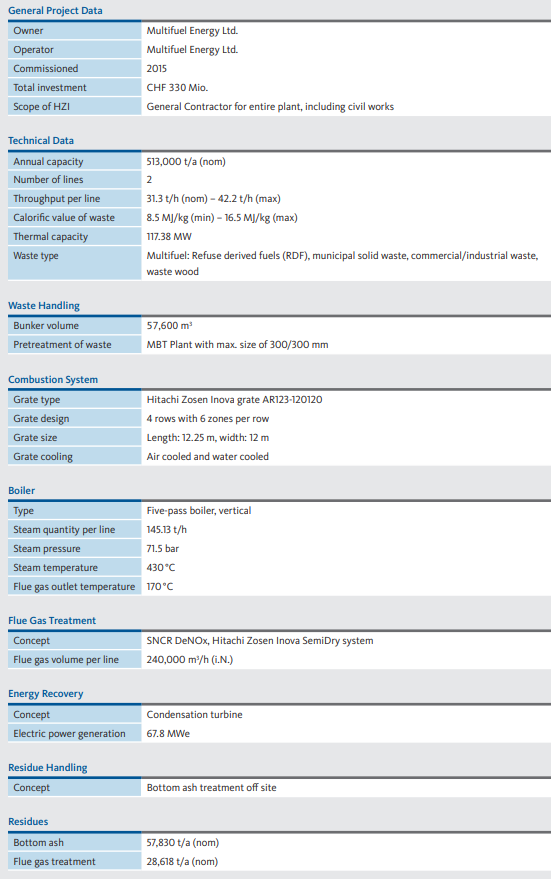Ferrybridge Multifuel Plant / UK
Ferrybridge Multifuel Plant / UK
Ferrybridge Multifuel 1 Plant – Where Four Specialists Join Up to Tackle Climate Change.

With the Ferrybridge Multifuel 1 plant Kanadevia Inova provided best available technology as a turnkey contractor to key players in the Waste to Energy (WtE) sector. The plant, with a thermal capacity of 2 x 117 MW, is designed to use a variety of different fuels, and to produce enough energy to power around 160,000 homes.
The multi-fuel plant is funded, owned and operated by Multifuel Energy Ltd., a 50:50 joint venture of SSE plc and Wheelabrator Technologies Inc. The facility uses a range of refuse derived fuels (RDF), including waste wood, to
generate electricity and heat. The majority of this fuel derives from a mechanical biological treatment plant that has been built by 3SE, a joint venture of the waste management company Shanks and SSE, as part of the Barnsely, Rotherham and Doncaster private finance initiative (PFI) procurement. The plant, with a thermal capacity of 2 x 117 MW, was completed in early 2015.
Contribution Toward Tackling Climate Change
The UK is the only country around the world that has introduced a long-term, legally binding framework to tackle the dangers of climate change. The Climate Change Act received royal assent on 26 November, 2008. The act
requires that emissions be reduced by at least 34% by 2020 and by at least 80% by 2050, relative to 1990 levels. In addition, the 2009 Renewable Energy Directive set a target for the UK to obtain 15% of its energy from renewable resources by 2020, compared to only 3% in 2009. With this continued strong political support for increased renewable energy in the portfolio mix, SSE, UK’s second largest energy producer, is committed to decarbonising its power generation by 50% by 2020. Renewable energy like the one produced by the Ferrybridge Multifuel 1 plant contributes significantly to achieving these goals. With its net power production of about 68 MW and a UK average
consumption per home of 3,300 kWh, the facility, supplied by Kanadevia Inova on a turnkey basis, is able to power approx. 165,000 homes.
Latest Technology for Multi-Fuel Use
Solid recovered fuel, derived from municipal solid waste, commercial waste, and waste wood, is delivered to the site by train or road. For train delivery, a container unloading station is integrated next to the facility. The fuel is tipped into the waste bunker within an enclosed reception hall. With its capacity of 57,600 m³, the bunker offers intermediate storage for up to 7 days of autonomous operation. After the fuel has been thoroughly mixed, a crane feeds the two independent lines, either in manual, semi automatic or automatic operation mode. Once in the feed hopper, the material is pushed onto the Kanadevia Inova grate by a double ram feeder. The double ram feeder concept is used to accommodate the different fuel properties the plant is designed for by being able to vary the opening width from the feed hopper to the grate. Special features of the fully integrated control system for stable and efficient operation with the multi-fuel include for instance additional temperature measurements in the grate area. By coupling with a water spray system, the fire position on the grate can be optimized. The grate itself has a water cooled zone to protect it against excessive heat when using high caloric fuels. When the waste is completely burnt, the remaining ash falls into the chain slag extractor, which transports the bottom ash to its dedicated bunker. The pyrolytic gases released from the waste are mixed with secondary air and recirculated flue gas, which are injected tangentially at high velocity for intensive mixing into the post combustion chamber above the grate to allow complete burnout of the flue gas for very low CO emissions. The recirculation of flue gas also enhances the efficiency of the plant.
Utmost Energy Efficiency
Built next to the existing power station, which is made up of four 500 MW generating sets (using 800 tonnes of coal and 218 million litres of coolant water per hour) with two additional gas turbines (which produce an extra 34 MW), the Ferrybridge Multifuel 1 plant is a small-size energy producer. However, with its optimized design and its highly efficient processing equipment, the facility can be proud of its net efficiency of 31%. This is achieved by recovering the energy released by the combustion process in a five pass boiler, which produces superheated steam. The chosen parameters of 71.5 bara/430°C for the superheated steam ensure high energy efficiency while still maintaining reliable boiler operation. The superheated steam is expanded in a condensation turbine. About 90 % of the gross electricity production is fed to the national grid. High plant availability is supported by an effective boiler cleaning system, consisting of a water-spray system for the 1st, 2nd and 3rd passes, a pneumatic rapping system for the 4th pass, and an explosion generation system in the 5th pass.
Clean Diversion from Landfill
In the first pass of the boiler nitrous oxides are reduced at a flue gas temperature of 850–950°C by means of Kanadevia Inovas’ Selective Non Catalytic Reduction (SNCR) system with aqueous ammonia as the reducing agent. The flue gas temperature is decreased to about 170°C at the outlet of the boiler, which is necessary to allow for the effective and safe removal of hazardous substances, such as dioxins or heavy metals, from the flue gas, using the proven proprietary Kanadevia Inova SemiDry system. The flue gas cleaning process keeps the plant in full compliance with the EU emission limits under any operating conditions. Agents used are hydrated lime and activated carbon. The flue gas treatment residues are separated in a fabric filter and sent for safe disposal to an appropriate landfill. The disposed-of residues amount to 3–5% of the waste treated by the facility. The clean flue gas is finally released through the 80 m stack.

